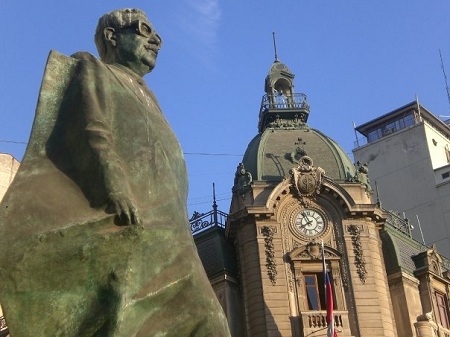Attention on Canadian politics has been mostly on Québec over the past month, but it’s worth noting that Ontario held two by-elections last Thursday that may augur early provincial elections soon.![]()
![]()
The Liberals needed to win both seats in order to win back a majority government for premier Dalton McGuinty (pictured above). While they easily held the Vaughan constituency, they lost the Kitchener-Waterloo constituency to the New Democratic Party. The loss is attributed to the unpopularity of McGuinty’s government fight to cut public-sector wages, and in particular, to cut the wages of public teachers. McGuinty’s government, with the support of the Progressive Conservative Party, this week passed a bill that implements a wage freeze on public teachers and denies them the right to strike for the next two years, which has been seen as a betrayal of public unions that have consistently supported McGuinty’s Liberal government. That 180-degree turn against teachers’ unions could well be a fatal strategic error for McGuinty, because it not only freed them to support the New Democratic Party (which shows signs that it could be as ascendant in Ontario politics as it has been federally) in the recent by-election, but potentially throughout the province in the next election.
So it’s a difficult loss for McGuinty, who became premier in 2003, and was reelected in 2007 and in 2011, albeit with a minority government, watching a 70-seat majority cut to just 53, with the Progressive Conservatives gaining 11 seats to hold 37 seats, and the New Democratic Party gaining seven seats to 17. By and large, McGuinty has been seen as a moderate and business-friendly premier, but has always been supported by teachers — until recently.
The NDP won the longtime Tory stronghold in what was seen as a three-way toss up — Catherine Fife, who won the seat, won 39.8% to just 31.8% for the Tory candidate and 24% for the Liberals.
With the NDP’s win on Thursday, the Tories fall to 36 seats in Ontario’s unicameral legislative assembly, and the NDP rises to 18, but the Liberals remain, tantalizingly, just one short of a majority.
Ontario politics has, generally speaking, been a two-party affair, with a one-time NDP breakout — current federal Liberal interim leader Bob Rae was premier in Ontario under the NDP banner from 1990 to 1995 — but a resurgent NDP that’s now leading federal polls for the next Canadian general election is now a lethal threat at the Ontario provincial level once again. The Tories generally dominated Ontario politics from 1995 to 2003 under the premiership of Mike Harris, who was often mentioned as a potential federal Tory leader.
The next Ontario election, which must take place before October 2015, are expected to occur much sooner upon the fall of McGuinty’s minority government — thus, the significance of last week’s by-election, which could have pushed those elections back out to 2015.
Current polls show that the Tories, under leader Tim Hudak, generally lead in advance of the next election, with the Liberals tied with the NDP. Polls show that Hudak is the least popular of the three Ontario party leaders, with the NDP’s Andrea Horwath increasingly gaining favor among Ontario voters.


